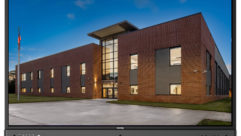Lessons from an iPad
AV technology is heavily influenced by consumer electronics. Customers often want things in their commercial applications that they have at home. That doesn’t mean you have to compromise.
“Flicking” and “scrolling” have taken on new meaning and provided us with a new standard to strive for in system control. The new standard for usability is no longer the six-year-old user, but the iPad interface.
We have to embrace that. New technologies will drive new paradigms in workflow, systems integration, and user interfaces. They’ll transform our expectation of how things are supposed to work. They’re beginning to have an impact on control system design, and it’s not all bad. Most importantly, this evolutionary course is leading us toward a higher-quality user experience, not a lower-quality one. Though the iPad is an Apple product, this is not like iTunes and MP3 files, which taught the public to gorge on compressed music.
As we go into our technology balancing acts, we’re right to worry that new devices could affect the quality of the solutions we deliver. In reacting to iTunes, Napster, and others, the audio industry recognized and found ways around the shortcomings of digital compression techniques. That’s in part because state-of-the-art solutions will always be moved forward by those unreasonable individuals for whom the status quo is not good enough. Their efforts, in turn, lead to higher overall quality, and the listener who was willing to settle for less will actually end up getting more.
Similarly, although displays get cheaper, that doesn’t mean that producing what’s shown on those displays will become less expensive—especially when everything from a hotel lobby to a phone now has a video screen. To the contrary, production values will have to improve in order to optimize images and pixel counts depending on whether the video needs to be high-def or just “good enough” for everyday use. After all, why would any company spend lots of money to build a solution that does nothing but transcode video signals from their native format and resolution into signals that can be viewed on a wide variety of devices?
Though modern technologies will impact our professional lives for years to come, I believe it will be for the better. They won’t lead to a reduction in the quality of what we provide. If anything, they’ll make people more aware of the difference between well-executed technical work and, well, poorly executed stuff. There will still be a need to learn (and teach) the basics. Much like the acrobat who kept trying, we’ll eventually be able to stand several cylinders high, balancing our myriad issues.










